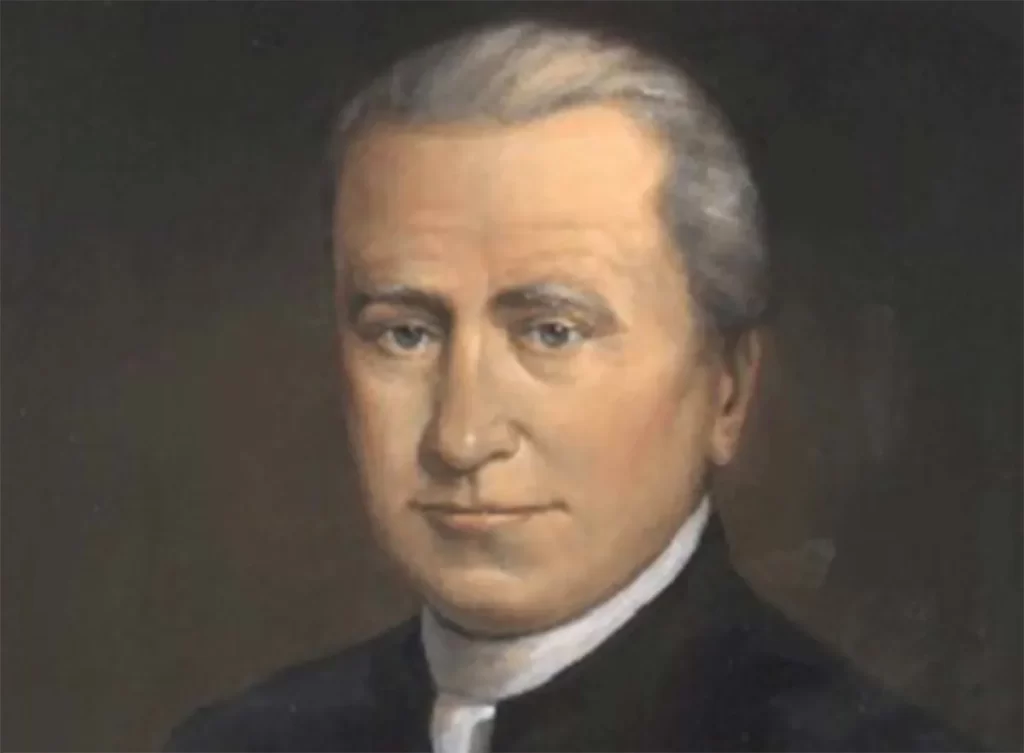
Image Source taken from Education Magazine
Material distilled from Edmund Rice Schools
Edmund was born on June 1st 1762 into a wealthy family and was raised in Callan, Kilkenny. As a Catholic, he attended a commercial academy in Kilkenny after attending secret hedge schooling. It was the practice to have wealthy Catholics to receive such schooling in the penal times. Afterwards, in 1779 Edmund began his apprenticeship as a merchant under his uncle, Michael Rice in Waterford city. They would supply goods bound for the New World in north America. In his late twenties, his entrepreneurial skills brought him financial success. The scene seemed set for a comfortable life, as he settled down to start a family.
In 1785 Edmund married Mary Elliot. But after just three years of marriage, Mary died after giving birth to her disabled daughter, also called Mary. Edmund’s world was turned upside down, and his life was to take a radical direction after much personal reflection. From this crisis, Edmund discovered a special vocation; to provide dignity to the poor through education. It was the start of the seed for the foundation of the Christian brothers.
Realising the effects that poverty and deprivation had on the young people of Waterford, Edmuns sold off his business interests and started a school for poor boys in a converted stable. It happened in 1802, and Edmund was joined by Thomas Grosvener and Patrick Finn, as the three began to live a form of community life in rooms over the Stable School in New Street.
Edmund desired a fully-fledged Religious Congregation, the Christian Brothers to be. It would be governed by traditional vows and recognised by the Holy See in Rome. In June 1802 he funded and began building a monastery in a working-class district in Waterford City. The building, was large and comprised living accommodation and a school. The school at Mount Sion was to accommodate a high student to teacher rate proportion. One Christian Brother taught a class of almost one hundred students while older boy acted as ‘monitors’, examining the homework and helping with catechism. The school boys were taught reading, writing, arithmetic and religion. The more senior pupils studied bookkeeping, geography and navigation. All the students received special preparation for first Holy Communion and Confirmation.
At Mount Sion Edmund built a school bakery and tailor’s shop. His poor students were hungry, so the bake house provided them with a meal giving them the energy to do their school work. The students suffered from the cold, due to scanty clothing. Tailors were employed to make uniforms for the boys.
All of Edmund’s educational activities were illegal in the eyes of the ‘authorities’ in Ireland at the time. But Edmund’s concern was for the poor, and he identified education as the key to survival. Most Irish Catholics were effectively cut off from education and consequently cut off from social and political progress. By founding schools and teaching congregations, Edmund Rice became a social liberator for the poor Catholics.
In the words of eyewitnesses Edmund’s devotion to the Blessed Sacrament was intense. He received Holy Communion very frequently. When he founded his congregation he encouraged the Brothers to assist at Mass daily. It was at prayer before the Blessed Sacrament that Edmund got the courage and confidence in God to face all difficulties.
1838 Edmund Rice retired as Superior General of his now established Christian Brother Order. He was 76 years of age and suffering from painful arthritis. Edmund spent the last two years confined to his room. In his lucid moments he loved to read the Bible and prayer remained central to his life. Edmund died on Thursday, 29th August 1844. He was buried at Mount Sion in the heart of Waterford city.
The church venerates Blessed Edmund Rice on the 5th of May